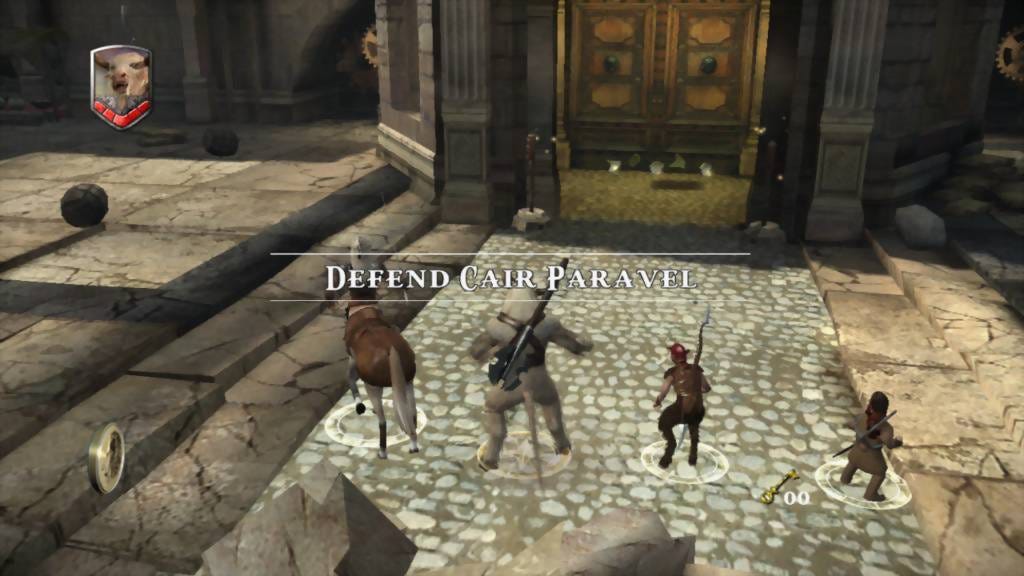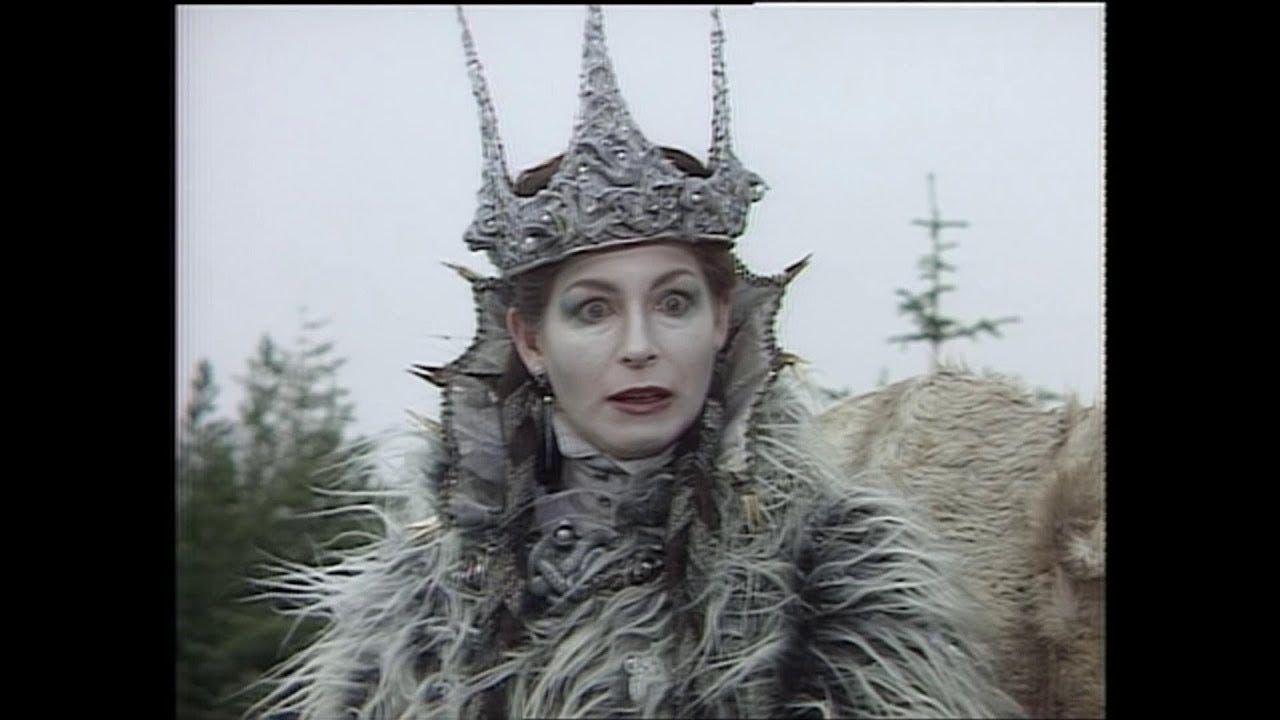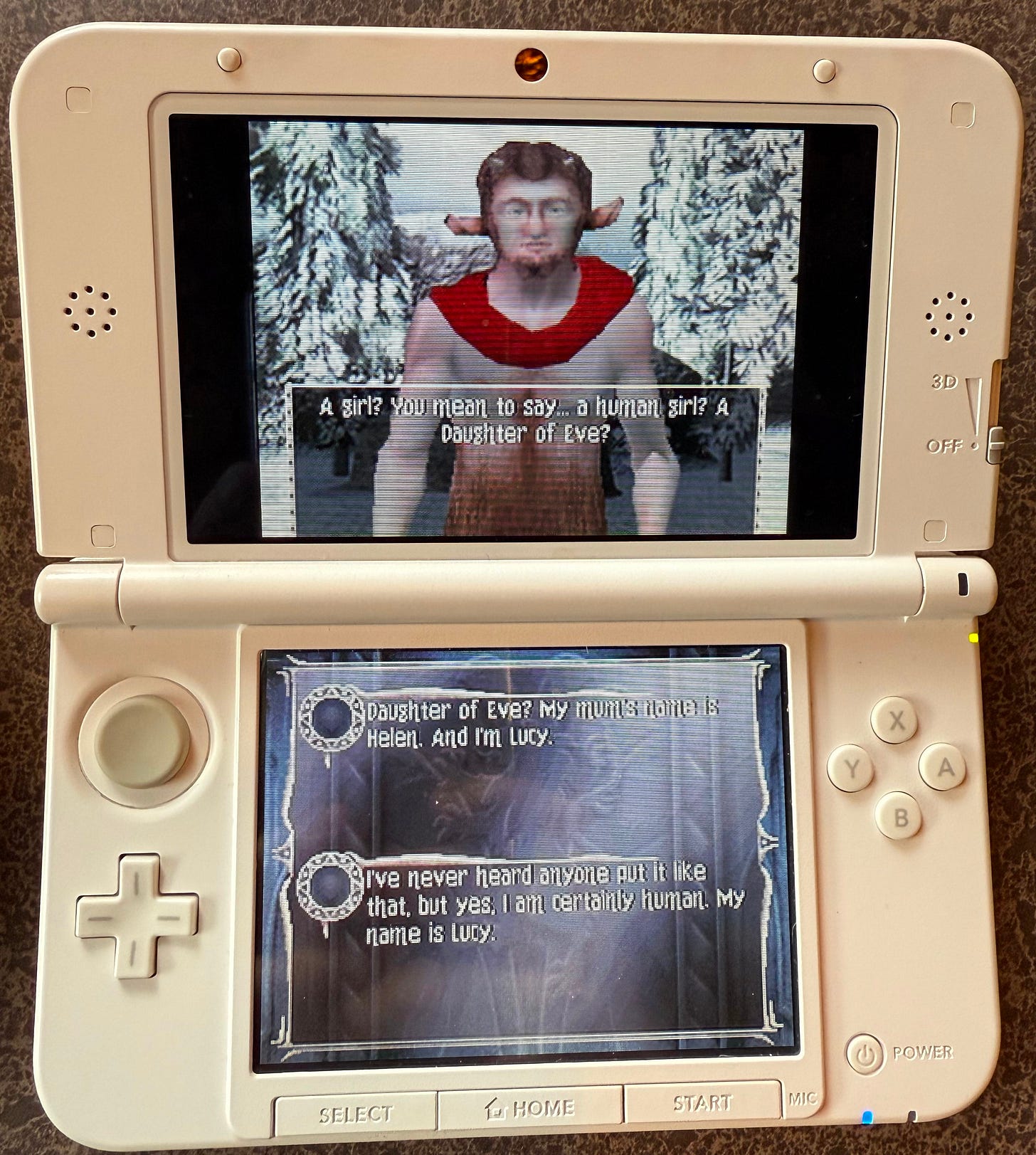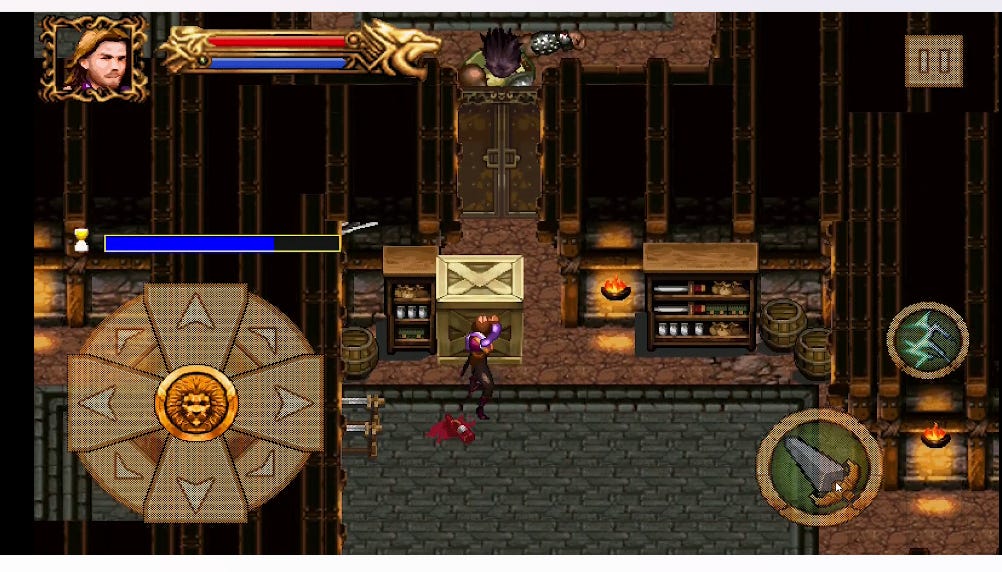Lazy Sunday
The Narnia film franchise never really took off, but the tie-in games for the first two movies go surprisingly hard.
I’ve always been a bit of a Narnia kid. Even my wife, who has the flimsiest familiarity with the series, agrees, telling me that I’ve always talked about the books and movies with a hint of affection. She hasn’t seen the most recent film adaptations, spanning from 2005-2010; nor has she seen the BBC’s sprawling miniseries adaptation that came out between 1988-1990. She hasn’t even read the books. Do you ever really know somebody? Until recently, one thing about the Expanded Narnia Universe that we both had in common? We hadn’t played any of the video games. For a film series aborted halfway through, there are…a bunch of them.
First published in the 1950s, the seven Narnia books tell the story of the titular land, a world of fantasy magic and mythical, talking creatures. Over the course of the books, readers get to see the birth and fall of Narnia, punctuated by adventures of human children who are typically whisked away to Narnia at the behest of a magical god-like lion named Aslan, who has sought human intervention in order to defeat encroaching evil. Published in nearly 50 languages, the stories have sold well over 100 million copies. It’s not exactly high art, but for a young boy in the 1990s, the series had it all: talking animals, time travel, sibling superpowers, and epic battles between good and evil.
While the books had it all, the then-only film adaptation I was exposed to in the 1990s were snippets of the BBC version. It’s strictly okay for a British miniseries produced before the Gulf War. The world of Narnia was mostly limited to what I had read on the page or imagined in my mind, with a handful of images from the BBC version, including a few of the White Witch. The low-fi images from VHS recordings emphasized the exotic allure of British cable programmes. This would all change in a few years, thanks to a handful of other magical British kids.
The first Harry Potter movie, released in 2001, was a game-changer. Like Star Wars for pre-teens, it lit the box office and the world on fire. The global success of Harry Potter led to a wake-up call for the producers, who realized the younger audience could jive with the setting. And they did - when The Chronicles of Narnia: The Lion, the Witch and the Wardrobe was released in 2005, it was the third highest-grossing film of the year earning $745 million. The first was Harry Potter and the Goblet of Fire, the fourth (!) film in the series to come out in as many years.
Three years later, the first Narnia sequel would be released, titled Prince Caspian. It performed well - just not as well - grossing over $400 million globally. Still, it was the tenth highest-grossing film of 2008. It kept the same director as the first film, and much of the cast returned as well. Still, the box office dip did some damage to the generally well-received franchise. The third film - Voyage of the Dawn Trader - would release in 2010. Its global box office was just a few million less than Prince Caspian. Despite the sustained momentum, it would be the last Narnia production to grace our screens.
One of my favorite things about these games is just how earnest they are. The developers really lay it on thick, starting with the sheer number of games there are. With Lion, you could play three separate and distinct games: the Game Boy Advance version, which featured simpler gameplay and mechanics; the Nintendo DS version, more akin to an Action-RPG, and then the series of console games for PlayStation, XBox, GameCube, developed by Traveller’s Tales (Crash Bandicoot, the Lego games). Do you think we would be getting such service in this economy? If anything else, it would be limited to cheap mobile tie-ins. Don’t worry, the Narnia games had those, too!
The console versions of the Lion open up with clips from the film's beginning. It presumes, practically begs that you’ve seen it - hopping around a bit with an odd tutorial level before sending Lucy off to Narnia for the first proper level. The game features an absolutely sinister transition from film clip to in-game engine that is so cursed, I would not dream of including it after this very sentence:
The tutorial levels that take place in 1940s England frankly suck. You first escape from your burning building and then spend a level in the mansion hiding from the nanny. Once all four sibs are in Narnia, the game mechanics reveal themselves. You can switch between the available siblings, doling out their special abilities as needed. They each have physical tricks, too: Lucy can ride a snowball while Edmund can climb trees, for example. There are plenty of collectibles, too: coins (to purchase power-ups), animals (to join the army, no less), or bonus medallions. There are light puzzle elements, combat encounters, and a smattering of set pieces imitating the on-screen action. Each level is bookended with scenes from the film but leaves a lot of the narrative tent poling left to the imagination, which is disorienting if you haven’t seen the movie in twenty years.
While I haven’t played the Game Boy Advance version, I rather enjoyed the RPG elements present in the DS version. The characters level up and feel stronger, as well as develop abilities to deploy during battle. While the combat can feel a bit redundant, it’s still an impressive display of talent from the developers on a console less than a year old at the time.
Released a few years later, Prince Caspian is also competently made by Traveler’s Tales, but this time also includes a PlayStation 3 version. Here, players control up to 20 different characters from the film across a handful of levels. Also included are light puzzle elements and new large scale battles, mimicking the set pieces from the film. These encounters provide a sense of scope missing from the first game. Even though there are some nice touches in the console version of Caspian, the earlier title feels more accessible, and the smaller number of playable characters makes each one feel different. With the excess here, some of them begin to feel redundant.
The DS version of Caspian also emphasizes RPG elements, in another nice touch that is better suited for the confines of the handheld. Here, combat takes place in a separate field and is turn-based RPG facing. However, the DS gimmick here is overplayed, with combat and nearly any other action requiring the player drag a stylus, time a strike, or blow air into the microphone. It’s interesting during the tutorial but begins to grate. Did we find this so charming 15 years ago?

Both DS versions suffer from a lack of worldbuilding. The console version’s incorporated scenes help establish a narrative concept. You can figure out who these kids are and what happens to them because of what you are expressly told. The DS versions don’t do this at all, providing a few lines of text and a few images to do all the heavy lifting. Even if you can get on board with the gameplay mechanics, the lack of immersion diminished the experience for me. We’re here for the tie-in first, after all.
The last film in the series did not get any console or handheld releases. Instead, we got this mobile game released by Gameloft. On second thought, maybe those DS versions of the game aren’t so bad, huh?
The presentation hinges on bringing the world to life, and the graphics mostly deliver. The titular wardrobe looks great in-game, and let’s be real - Croft Manor has nothing on this mansion. Even the winter scenescapes convey the sense of wonder these children feel as they come across Narnia for the first time. The sound design liberally borrows from the film scores, except the samples seem a bit too short. A few climatic scenes are slightly diminished by a looping score that cycles back a bit too quickly.
That’s the thing about these games, though. Even with their quirks, they are still pretty good video games, and great tie-in games. Hell, even the GameLoft mobile games from yesteryear are better than some of the trash we are getting now. The teams here were motivated to bring the world of Narnia to gaming consoles, and it shows. For the most part, they kinda ate? Something is so endearing about the pride the developers feel for their work.
It’s a bit funny, because the films almost feel a little too at arm’s length: they are beautifully made with strong performances and great effects, but they still feel a bit stiff. Meanwhile, the games themselves have this bombast the films themselves could have benefitted from. Who knows, maybe with some of that extra swagger in the films and we could’ve stretched this series into eight films, too.
With a new generation of Narnia films coming out, I’ve been wondering when to introduce the series to my older kids. I think the movies are arguably a bit too intense for children their age, so I’ve decided to slow drip the series. We will start with the first book and then we may dip into the console game. I figure I have a year and a half to adequately convert them into fans in time for the new adaptation in 2026. If all goes well, there will be a few more Narnia kids in this house.
***
Remember this?






The Lion devs were obviously inspired by the Animorphs book covers. They did great work. No notes.
RIP movie licensed games. I feel like late 2000s/early 2010s was their swan song. I don't really miss them for their content, since most of them are terrible, but they are incredibly nostalgic.
Thanks for highlighting these Narnia games. Always wondered about their quality!